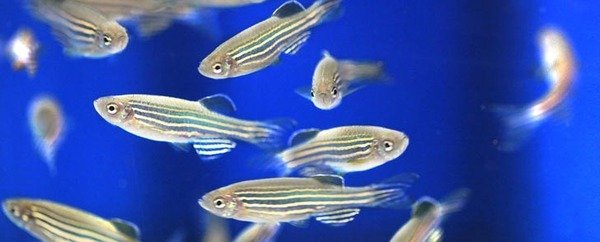
The zebrafish as a model organism
Zebrafish are unassuming and undemanding. Almost every child knows that – at least any child that has kept fish in an aquarium. Since the beginning of the 20th century, these fish have been one of the most popular ornamental fish and to this day swim in millions of sitting rooms.
Their golden longitudinal sides are traversed by shimmering, blue-black longitudinal stripes, which continue right up to the fins. Originating in South Asia – or to be more precise, in Pakistan, North India, Nepal and Bangladesh – the fish measure a maximum of five centimetres in length, and in the wild feed on small insects and crustaceans.
Scientists only discovered the zebrafish, which is a member of the minnow family, for their own purposes in the late 1960s. In the early 1980s, researchers managed to breed zebrafish with identical genes, known as homozygotes. For the first time ever, therefore, researchers were able to study changes in genes, which otherwise would have been suppressed by the dominant gene copy.
Yet, following this humble beginning, why has the zebrafish developed into one of the most popular model organisms for research? The pretty stripes have nothing to do with it. Instead, a combination of characteristics makes the zebrafish so attractive that countless labs around the world now use it for research: in the Max Planck Society alone at seven different Institutes.














